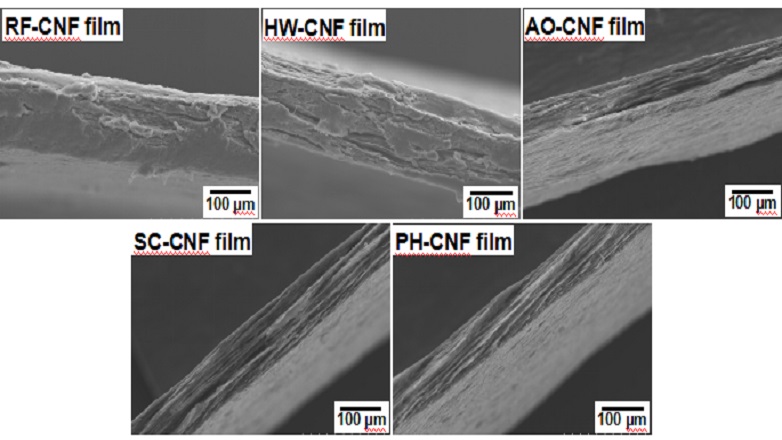
Recently, researchers from Institute of Bast Fiber Crops, Chinese Academy of Agricultural Sciences (IBFC, CAAS) and Hunan Agricultural University (HUNAU)havesystematically investigated the influence of pectin on the micro-nanostructure and physical properties of nanocellulose films and a new method based on pectin for regulating the micro-nano structure of nanocellulose films was constructed.This study provides new ideas forthe multifunctional development and application of nanocellulose films, and also presents new technical routes in the field of biomass resource conversion and utilization.
Nanocellulose films consist of cellulose fibers with at least one dimension below 100 nm. Due to its abundance,biodegradability, biocompatibility,light weight,excellent mechanical properties, and high structural/chemical tunability, nanocellulose and its films have a wide range of applications in automotive, aerospace, construction, electronics, cosmetics, coatings/paint, food packaging, paperboard/packaging, specialty paper, composites/polymer reinforcement, healthcare, oil drilling and other fields.
In this study, cellulose nanofibril (CNF) films from ramie fibers were prepared with different pectin compositionsand contents, and the influence of residual pectin on the overall performances of CNF films was evaluated. Therewas no significant effect of the residual pectin composition on the properties of obtained CNF films. However, pectincovers the CNF surface and act as a physical barrier between the cellulose fibrils; thus the nanocellulose filmswith high pectin content will have a loose and porous structure, resulting in a high surface area and a high waterabsorption. After removal of amorphous pectins in CNFs, the low pectin containing CNFs are able to pack morecompactly to form a strong and thin film. This paper provides guidance for the preparation of CNF films withdifferent performance requirements.
The research was supported by the Youth Program of the National Natural Science Foundation of China, the Science and Technology Innovation Project of the CAAS, and so on.
The study entitled “The influence of residual pectin composition and content on nanocellulosefilms from ramie fibers: Micro-nano structure and physical properties” has been published online in InternationalJournal of Biological Macromolecules and can be accessed through the following link:https://doi.org/10.1016/j.ijbiomac.2023.125812.


Fig. Micro-nano structure and related physical properties of nanocellulose films with different pectin contents

